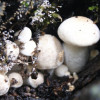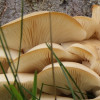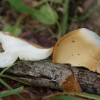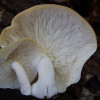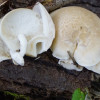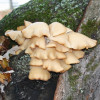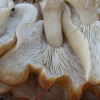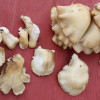Edible, therapeutic and toxic mushrooms
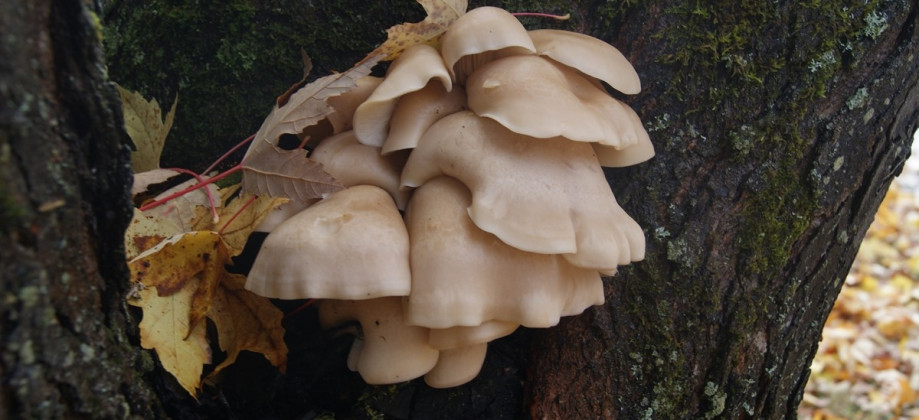
Habitat
Trees in urban parks and cemeteries, along sidewalks, on lawns and in campgrounds should not be neglected. These trees, often injured or trimmed, allow for the discreet introduction of fungi that, when established, will fructify over many years. The structure of the tree is weakened, but only a harvester or attentive observer will notice.
The Beech Pleurotus fructifies at any height, in the treetops or near the ground.
Cap
By groups of 15 to 50 fruitbodies, cap blad, whitish to pale tan, sometimes tessulated with watery spots when fresh and young.
Stalk
Centered to slightly offcenter, usually curved. White to yellowish, variously striated longitudinally.
Comments
Send a comment
The fungus enters the tree through a wound and develops in the dead part of the wood inside the trunk. Each year, a new ring of wood is added under the bark. Within the trunk, another ring dies, giving the fungus an additional ring of wood to decompose. Thus, the mushroom can live a long time, although the tree eventually becomes completely hollow.
For more informations
Formation
For those who wish to improve their knowledge, register for the Foundation's training program on this site and receive a certificate confirming the fruit of your efforts.
































